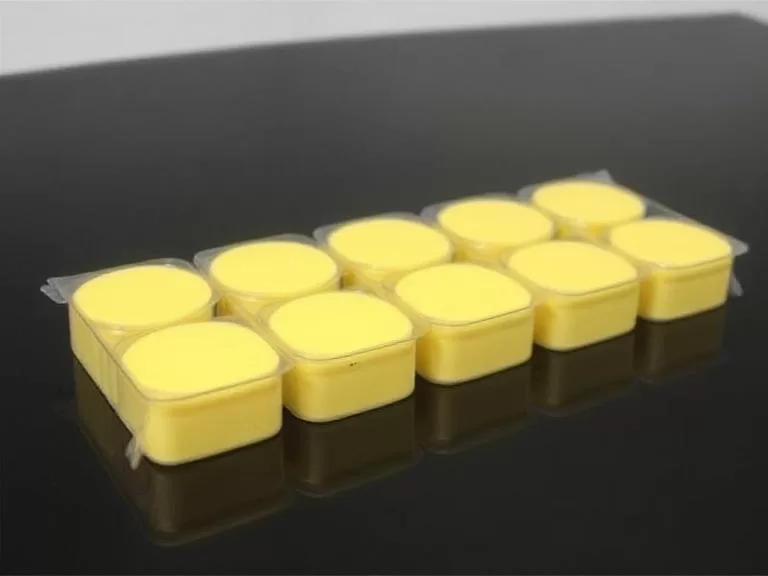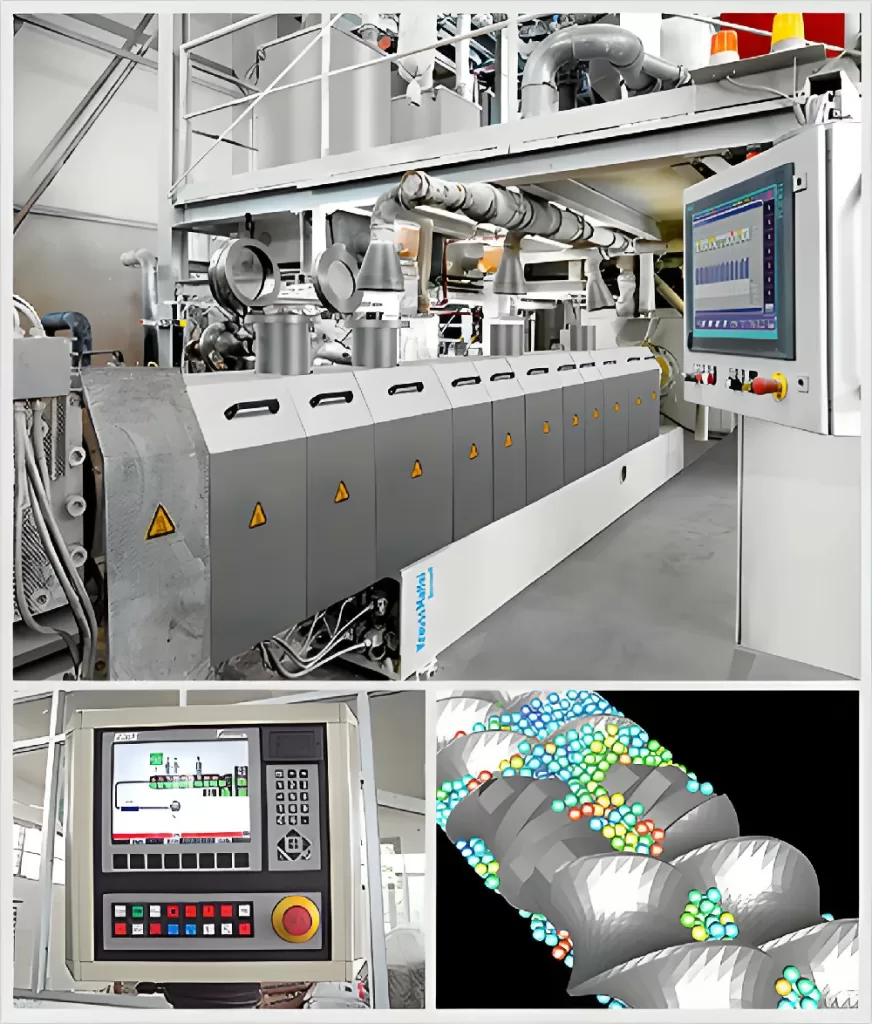Charming Masterbatch has decades of expertise in polymer additive technology and pigment dispersion. Using advanced German twin-screw machines and a strong R&D foundation, Charming delivers high-quality color masterbatch and functional masterbatch solutions across multiple industries. Their products are trusted in over 18 countries across Europe, South America, Southeast Asia, the Middle East, and North Africa.

Table of Contents
- Introduction to Polymer Processing Aid Masterbatch
- What is Polymer Processing Aid Masterbatch?
- Working Mechanism of Polymer Processing Aids
- Types of Polymer Processing Aid Masterbatch
- Key Benefits of Polymer Processing Aid Masterbatch
- Applications in Polymer and Plastic Industries
- Why Choose Charming Masterbatch?
- Summary Table
- FAQs
- References
Introduction to Polymer Processing Aid Masterbatch
In today’s fast-evolving polymer industry, the demand for high-quality surface finish, faster production speeds, and energy efficiency continues to grow. However, extrusion and molding processes often face issues like melt fracture, die build-up, and uneven surface texture. That’s where Polymer Processing Aid (PPA) Masterbatch comes in—an essential additive that enhances polymer flow and processing performance.
What is Polymer Processing Aid Masterbatch?
Polymer Processing Aid Masterbatch (PPA MB) is a specialized additive used in thermoplastic processing to improve the melt flow behavior of polymers. It consists of a fluoropolymer-based additive dispersed in a compatible carrier resin, allowing processors to achieve smoother extrusion with fewer defects.
PPAs are particularly effective in applications such as film extrusion, blow molding, fiber spinning, and pipe extrusion. They reduce melt fracture, improve throughput, and extend die life—resulting in more consistent and aesthetically pleasing products.
Core Functions of PPA Masterbatch:
- Reduce melt fracture during extrusion.
- Minimize die build-up and polymer degradation.
- Enhance surface smoothness of films and molded parts.
- Improve process stability and product uniformity.
Working Mechanism of Polymer Processing Aids
The primary mechanism behind Polymer Processing Aids lies in their ability to modify interfacial friction between the polymer melt and the metal die wall. When the polymer passes through the extrusion die, friction can cause shear stress, leading to rough or uneven product surfaces.
How It Works:
- At processing temperature, the fluoropolymer additive in the PPA migrates to the die wall.
- It forms a thin lubricating film between the polymer and metal surface.
- This reduces shear stress and allows the polymer to flow more uniformly.
- The result: smoother surfaces, fewer defects, and lower energy consumption.
This lubrication effect not only improves surface quality but also helps prevent melt fracture—a common issue in high-speed extrusion lines.
Types of Polymer Processing Aid Masterbatch
Different polymers and applications require tailored processing aids. Common categories include:
- Fluoropolymer-Based PPAs: Highly efficient at low concentrations, ideal for high-performance polyethylene (PE) and polypropylene (PP) films.
- Silicone-Based PPAs: Used for improving mold release and surface finish in injection molding and cable compounds.
- Olefin-Based PPAs: Cost-effective alternatives suitable for general-purpose applications.
Each type offers distinct advantages, depending on processing conditions, resin compatibility, and target performance levels.
Key Benefits of Polymer Processing Aid Masterbatch
1. Enhanced Process Efficiency
By reducing friction and improving flow, PPAs enable higher extrusion speeds without compromising quality. This translates into increased productivity and reduced operational costs.
2. Superior Product Quality
- Eliminates surface defects such as sharkskin and die lines.
- Provides glossy, uniform film surfaces.
- Improves optical properties in transparent films.
3. Extended Equipment Life
The lubricating layer reduces mechanical wear inside the extrusion die, resulting in longer die life and less downtime for cleaning or maintenance.
4. Energy and Cost Savings
Lower extrusion pressure and smoother polymer flow lead to reduced energy consumption. Additionally, fewer rejects mean better material utilization.
5. Compatibility with Multiple Resins
Modern PPAs are designed for use with a variety of polymers, including:
- LDPE, LLDPE, HDPE
- PP, EVA, PVC
- Engineering plastics and blends
Applications in Polymer and Plastic Industries
Polymer Processing Aid Masterbatch plays a vital role across multiple segments of the plastics industry. Typical application areas include:
- Film Extrusion: For blown and cast films used in packaging, agriculture, and laminates.
- Fiber & Filament Production: In BCF yarns, nonwoven fabrics, and textile fibers to improve process stability.
- Pipe & Profile Extrusion: Enhances surface finish and reduces die build-up.
- Injection Molding: Improves surface gloss and mold release.
- Cable Compounds: Reduces friction and enhances dielectric performance.
Why Choose Charming Masterbatch?

Charming Masterbatch stands out as a trusted manufacturer with decades of experience in color and functional masterbatch development. Equipped with advanced German twin-screw extrusion systems, Charming ensures superior pigment dispersion, consistent quality, and reliable performance in every batch.
Charming Masterbatch Product Categories:
- 着色母粒 — Ideal for fiber, filament, nonwoven, and film applications.
- 功能母粒 — Including 抗菌防霉, 抗静电, 阻燃剂, and UV Stabilizer series.
Beyond manufacturing, Charming provides comprehensive technical support and custom formulation services to meet specific project needs. Their customer-first approach has earned them a strong presence in both domestic and international markets.
Summary Table
| Aspect | Details |
|---|---|
| Definition | Additive masterbatch used to improve polymer processing and surface quality. |
| Main Function | Reduces friction, melt fracture, and die build-up during extrusion. |
| Common Types | Fluoropolymer-based, Silicone-based, and Olefin-based PPAs. |
| Applications | Film extrusion, fibers, pipes, injection molding, cables. |
| Key Benefits | Improved surface finish, higher efficiency, lower energy use, extended die life. |
| Manufacturer Highlight | Charming Masterbatch — global supplier with German twin-screw technology and custom solutions. |
Frequently Asked Questions (FAQs)
1. What is the typical dosage of Polymer Processing Aid Masterbatch?
The recommended dosage usually ranges from 0.1% to 0.5%, depending on the polymer type and extrusion conditions.
2. Can PPAs be used in food contact applications?
Yes, but only certain grades are FDA-approved. Always verify with the supplier before use in food packaging films.
3. Does PPA affect film transparency?
High-quality PPAs from manufacturers like Charming Masterbatch are designed to maintain optical clarity while improving surface finish.
4. How do PPAs differ from slip agents?
Slip agents reduce surface friction after film formation, whereas PPAs improve polymer flow during melt processing.
